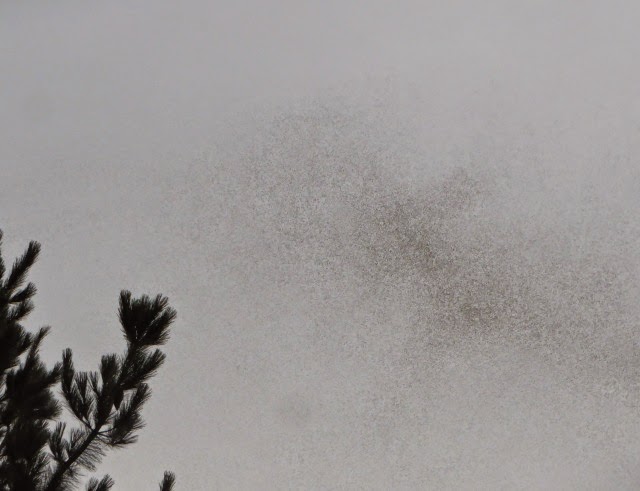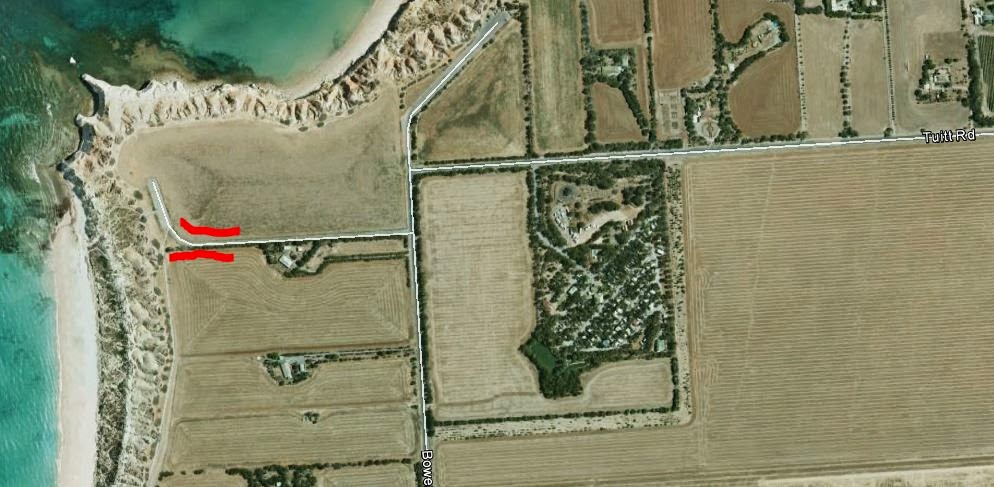Tawny Grassbirds visit Canberra.
On 29 December 2016 a Canberra birder, Kim Larmour, reported a Tawny Grassbird from Jerrabomberra Wetlands NR. This was thought to be a first for the ACT and the twitching hordes have duly descended to confirm Kim's observation.
Another birder has subsequently discovered 5 earlier reports of this species in the Atlas of Living Australia. They were supplied through 2 other - reputable - organisations. However on following up with those organisations 4 records have been found to be erroneous and the 5th an historic record, of eggs, seen as likely to be very dubious at best. So Kim Larmour's 'first' stands.
I made a couple of unsuccessful visits to the general area, misunderstanding where she had seen the bird. One of the subsequent observers made reference to one of the established hides ("blinds" in North American parlance) from which the bird was visible with a spotting scope. So on a third visit I took myself off to that hide. There I met another pair of birders who had seen the bird that morning and explained exactly where it was seen.
It was a bit off the beaten track but on heading back in that direction a somewhat unusual call was heard while I was on said beaten track. (Kim Larmour is familiar with the species from elsewhere and had recognised the call, leading her to the bird.) Sure enough there was the bird.
In fact there were clearly two of them. One seemed to be out in the open most of the time while the other was lurking, and calling, from within the vegetation. This led me to speculate in my report to ebird about the possibility that the birds were breeding. Subsequently:
I have extracted part of the species map from eBird.
Prior to researching this post I had assumed that the limit of the distribution of the species was the area just South of Wollongong (some 150kms NE of Canberra as a sensible bird flies). However the map from eBird also shows the following sightings which have been endorsed by eBird moderators. In chronological order these are:
Another birder has subsequently discovered 5 earlier reports of this species in the Atlas of Living Australia. They were supplied through 2 other - reputable - organisations. However on following up with those organisations 4 records have been found to be erroneous and the 5th an historic record, of eggs, seen as likely to be very dubious at best. So Kim Larmour's 'first' stands.
I made a couple of unsuccessful visits to the general area, misunderstanding where she had seen the bird. One of the subsequent observers made reference to one of the established hides ("blinds" in North American parlance) from which the bird was visible with a spotting scope. So on a third visit I took myself off to that hide. There I met another pair of birders who had seen the bird that morning and explained exactly where it was seen.
It was a bit off the beaten track but on heading back in that direction a somewhat unusual call was heard while I was on said beaten track. (Kim Larmour is familiar with the species from elsewhere and had recognised the call, leading her to the bird.) Sure enough there was the bird.
In fact there were clearly two of them. One seemed to be out in the open most of the time while the other was lurking, and calling, from within the vegetation. This led me to speculate in my report to ebird about the possibility that the birds were breeding. Subsequently:
- one member of the COG chatline has hypothesised that the call (recorded by another birder while I was there) sounded like "a scolding call"; and
- another member of the chatline reported seeing one bird fly into the reeds with what might have been a white caterpillar in its beak.
- some members reviewing the video shot yesterday suspect a brood patch is evident.
I have extracted part of the species map from eBird.
Prior to researching this post I had assumed that the limit of the distribution of the species was the area just South of Wollongong (some 150kms NE of Canberra as a sensible bird flies). However the map from eBird also shows the following sightings which have been endorsed by eBird moderators. In chronological order these are:
- 2010 August: point 2, McLeod Morass
- 2013 December: point 1 Lake Cargelligo WTP
- 2014 March- April: point 3 - Seaford Wetlands
- 2014 May: point 3 - Braeside
- 2014 October - December: point 3 - Liverpool Rd Retarding Basin
The species account in HANZAB indicates the species has been reported infrequently from scattered locations away from the coast in NSW (eg Maquarie Marshes). Unconfirmed reports from near Canberra and Albury are mentioned. One vagrant record is cited for Tasmania. The accounts simply states " Vic: No records."
I take two points from this:
- the species reaches places outside the 'normal range from time to time; and
- the bird (all the Vic checklists have been of a single bird) in these other outlier reports has not stuck around for more than a few months. The Seaford Wetlands (126 eBird checklists) and Lake Cargelligo WTP (199 lists) are intensively well covered by eBird so if such a vocal species was lurking there it would have been reported.





Comments